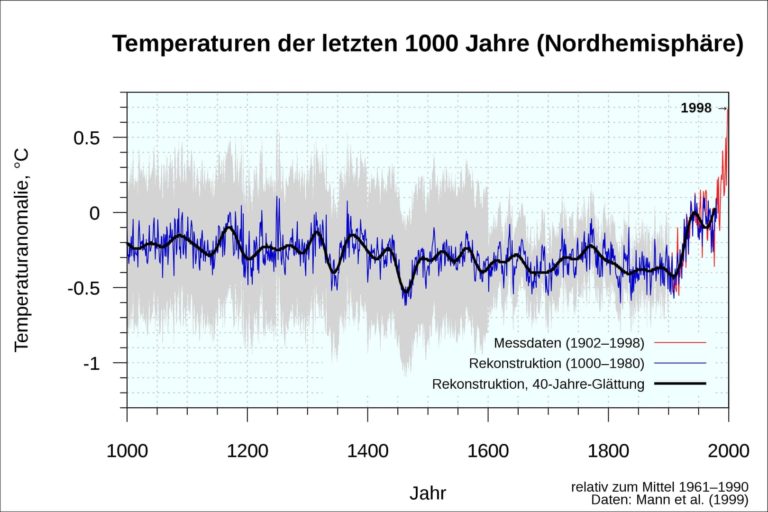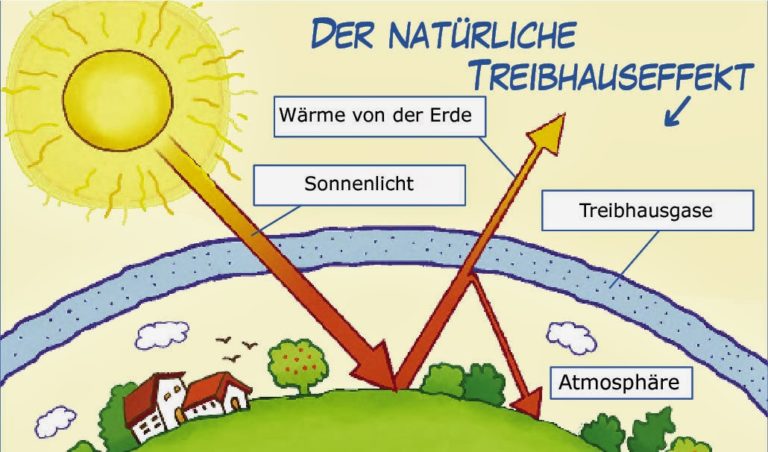This is how the Intergovernmental Panel on Climate Change (IPCC) began its latest report, which summarizes the latest scientific findings on climate change. According to the report, the role of human influence cannot be denied. The logical consequence is that we humans can stop climate change. The following article explains where we need to start, what we are currently doing wrong and what the situation in Germany looks like.
What is climate change?
The word “climate change” comes up all the time and in a wide variety of contexts. That’s why we’ll start by explaining what climate change means in a way that’s easy to understand. First of all, climate must be distinguished from weather. Weather is the measured state of the atmosphere at a particular time in a particular place. In contrast, we talk about climate when we mean the weather over a longer period of time of at least 30 years.
Climate change therefore does not mean short-term fluctuations, but constant changes. Such changes have always existed. In the history of our planet, for example, there have been strong cooling periods and even ice ages. This natural climate change is caused, among other things, by events such as volcanic eruptions or meteorite impacts. Even changes in the Earth’s orbit, which cause us to approach or move away from the sun, have their influence.
However, the latest developments show a clear warming of our earth, which cannot be explained by natural variations. Direct measurements since the middle of the 19th century, as well as modern satellite, air pressure, precipitation and radiation measurements record more rapid changes than are naturally possible. Such a rapid development is different from anything we’ve seen in the last 65 million years!
Contrary to initial assumptions, it cannot be due to the influence of events such as volcanic eruptions or the sun. Their effects are not strong enough and have been rather cooling in recent decades. Rather, various approaches lead us to believe that the observed changes are directly related to human activities. The following graph is an example: it suggests that the average temperature of the last 1,000 years is increasing significantly. The violent acceleration of the last decades falls on the age of industrialization by us humans.

The fact that the average global temperature has risen by 1 degree in the last century and that this effect is becoming ever stronger is due to human behavior. Therefore, one speaks of anthropogenic (man-made) climate change. Because of the rapid pace of climate change, “climate catastrophe” is a more appropriate word. “Climate change” has become strongly established, however, so it is used more frequently.
Why is our Earth warm?
Another term that keeps coming up in this context is the greenhouse effect. You should know that the natural greenhouse effect makes it possible for us to live on this planet at all. Without this mechanism, we would have a global average temperature of -18°C!
The greenhouse effect explained:
A wide variety of gases are collected in the atmosphere around our Earth, among which are greenhouse gases. These include, for example, carbon dioxide, methane and nitrous oxide (laughing gas).
Greenhouse gases create comfortable temperatures for us. The sun’s rays reach us through the earth’s atmosphere and are reflected by bright areas on the earth’s surface. However, not all of these reflected rays make it back through the atmosphere into space, but are absorbed by the greenhouse gases. As a result, the greenhouse gases heat up and send heat in the form of long-wave rays to the Earth’s surface. This results in an average temperature of + 14°C on earth.

This video further explains the greenhouse effect.
And why is the Earth heating up?
Which greenhouse gases are the cause?
But why are greenhouse gases always increasing?
So let’s move on to the causes of global warming. We’ve already briefly touched on some of the areas where immense emissions of greenhouse gases are occurring. These include:
- Fossil fuel combustion: This occurs both to generate electricity and heat, and in the use of gasoline, for example.

This graph gives you an overview of which types of electricity generation are most harmful to the climate. - Livestock: Agriculture is a culprit for several reasons, as it not only produces methane, but also CO2. These are produced due to breeding, transport and keeping of livestock. In addition, the animals need food, the cultivation of which further requires energy and causes the clearing of forest areas. It must also be taken into account that by clearing forests we not only take away the trees’ ability to filter CO2, but additionally release carbon long stored in the trees. The Worldwatch Institute therefore holds livestock responsible for 51% of all global greenhouse gases. Far ahead is land use for cattle breeding and for the production of dairy products.
- Transport: You have probably long been aware that means of transportation emit CO2. With the help of this graph, you can compare the greenhouse gas emissions of different means of transport.

This graph compares transportation modes according to their greenhouse gas emissions.
Greenhouse gas emissions by these sectors continue to increase for several reasons:
- Growing world population: More people means more electricity, heat, food, more waste produced and more consumption. As a result, resources are consumed even faster, agricultural cultivation methods become more intensive and forest areas are cleared even faster. You can learn more about the Amazon rainforest case here.
- Rising standard of living: Global prosperity is rising. This means that more electricity is being used, more people are flying, driving and consuming. The consumption of animal products is also increasing.
- Lack of a sense of responsibility: Industrialized nations are not aware of their luxurious lifestyles or do not want to give them up. The contribution of developing countries to greenhouse gas emissions is small, so they can do little.

This comparison shows the CO2 emissions of different countries.
What does this look like in Germany?
Germany’s CO2 emissions are unfortunately higher than the global average. The sectors can be ranked by greenhouse gas emissions as follows:
- Energy industry (2021: 30 % of greenhouse gas emissions): The German energy industry needs to go green, also to achieve climate neutrality in other areas. Our energy consumption in everyday life happens unconsciously and out of habit, but can be reduced super easily! Utopia has some tips with which you can save energy in everyday life.
- Industry (25 %): Steel and cement are the main contributors here.
- Transport (20 %): The status quo in transport can be explained by lobbying and our consumption. The good thing is that each and every one of us can do something about it by relying on bicycles, rail transport and electric cars, and by avoiding airplanes.
- Buildings (living and working; 15 %): Better insulation and insulation is needed. WE should also refocus on heating more with electric heat pumps rather than oil and gas.
- Agriculture (8 %): As consumers, this is the aspect we can most easily influence.
- Waste (2 %): Methane emissions occur when organic waste decays. Waste has a small part in total emissions, but is difficult to bring to 0.
Glimmer of hope: How can we fight climate change?

- Plant trees! If you can’t do it yourself, you can also donate to reforestation projects like ours in Brandenburg, Romania, Colombia or Peru. Click here for the form!
- The WWF has compiled a list of other small things that are easy to implement in day-to-day life.



